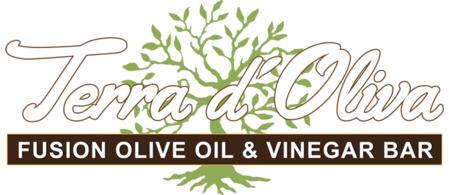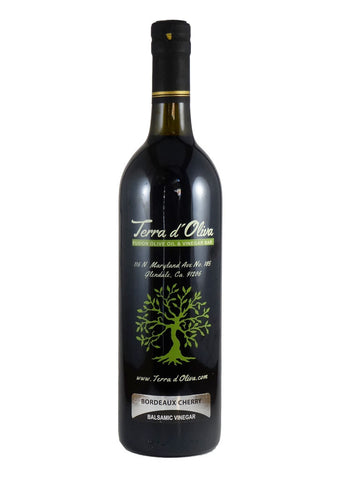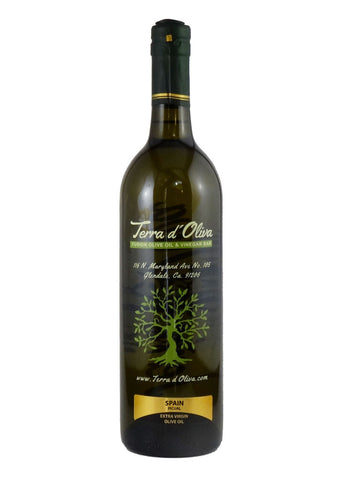What is the true aceto balsamico, the balsamic vinegar? How is it produced? How the different flavors are added?
What is true aceto balsamico (balsamic vinegar)?
True aged traditional balsamic vinegar (aceto balsamico tradizionale) production involves the reductive fermentation process of converting caramelized grape juice, called must, into a syrup-like sweet & sour vinegar. Grapes used in this process are traditionally White Trebbiano or Red Lambrusco grapes. Traditional methods require that the aceto balsamico is aged for at least 12 years in old wood barrels of successively smaller sizes. Typical woods used for the aging process include; oak, chestnut, mulberry, ash, juniper, acacia, and cherry. It is important to note that nothing is added to the carmelized must as it ages. As the aceto balsamico ages (12, 18, 25 years) the volume is reduced through evaporation resulting in a concentrated solution.
During this time Probiotic wild yeast and acetic bacteria colonize the must and raise its acidity. At the end of the aging process the aceto balsamico tradizionale is delivered to two Italian consortiums in Modena, Italy or Reggio Emilia, Italy for inspection and certification. If the aceto balsamico passes inspection it is filled into 100ml bottles dictated by the Italian consortium, numbered and wax-sealed. Average cost for a 100ml bottle of aceto balsamico tradizionale can range between $200-$500/bottle. True traditional balsamic is NEVER sold in bulk. Practical cooking applications for Traditional balsamico are somewhat limited by it's thickness and cost. The next best alternative Terra d'Oliva offers is a full line of aged and flavor-infused balsamic condimentos at a fraction of the price. All of our balsamic condimentos are produced in Modena, Italy and follow the strict traditional method with three variations:
- The master barrel is inoculated with a small amount of ultra-premium Red wine vinegar. The addition of Red wine vinegar introduces natural acetic bacteria and yeast which stimulates vinegar production. No other additions occur throughout the aging process.
- As the balsamico ages it is transferred into sequential barrels of smaller size but unlike the Traditional method it is topped off with a small amount of younger balsamico as it progresses from barrel to barrel. Topping off with younger balsamico is referred to as the Solera method
- Lastly, these production batches do not undergo the stringent testing by the Italian consortium (DOP). The result of this process is a slightly less viscous aceto balsamico while still maintaining a perfect balance between acidity and sweetness. Most importantly our balsamic condimentos can be used in numerous cooking applications. Finally, it is important to note that like extra-virgin olive oil many of the store-bought balsamic vinegars are adulterated consisting of distilled vinegar, thickeners, artificial coloring, molasses, artificial flavoring, syrups, sweeteners. We welcome you to taste the difference.
Barrel Age vs. Balsamic Age
The age of a balsamic is exactly that; how long the cooked grape must has been aged in wood casks. Please do not confuse this with the slight of hand marketing terms referring to the age of the wood barrels. Yes the label may say "barrel aged" but the real question is: how long? We have recently seen product descriptions stating the "balsamic" was aged in 25, 50, 100 year-old wood barrels. This does NOT mean the balsamic is 25, 50, 100 years of age. Unless you are interested in consuming the wood, the age of the barrel is meaningless. All true barrel aged Italian balsamic vinegars are aged in a battery of conditioned wood casks.
Viscosity of 12 year-aged balsamic should be very similar to water. Viscosity of 18 year-aged balsamic should be similar to olive oil (lightly coat the sides of a cup), but not thick like Hersey's chocolate syrup. Take home message: One can age grape must in 1000 year-old wood barrels for 2 days but the end result is still a 2 day-old red wine vinegar and not a 1000 year-old balsamic vinegar.
How is white balsamic vinegar produced?
Same process as the Solera method above except for two key changes.
- The grape must is not caramelized and;
- The grape must is aged in new wood and not previously used (old wood) aceto balsamico barrels.
When does the flavor infusion process occur?
Flavor-infusion for our balsamic vinegars occurs after the aging process.
Are your balsamic vinegars gluten free?
Yes, all of Terra d'Oliva balsamic vinegars are gluten free and produced in gluten free facilities.
My cork is stuck or broken, what should I do?
First and most importantly don't panic, it will be ok! We like to use the phrase "Balsamic + Cork + Glass = Glue". We bottle all products in-store and use corks to seal off the bottles. By nature, balsamics contain small amounts of sugar from the grapes and therefore may become sticky. Simple cork maintenance is especially important to prevent sticking and/or breaking. Please follow these simple tips when reseating the cork after use:
- Rinse cork off with warm water and wipe dry between uses;
- Do not push cork all the way back into bottle;
- Wiggle cork back and forth to insert or remove from bottle;
- Use a cork alternative such as a pouring spout (eliminates the need to remove cork during each application).
Don't panic, if the cork becomes stuck just use a corkscrew to remove just as you would do with a wine cork.
If I get cork in my balsamic is it ruined?
No, no, no your balsamic is perfectly fine! If it is aesthetically unpleasing then just use a strainer to remove the trace of cork. As for cork ruining wine, well we don't sell wine so no official comment but chances are any cork taint of wine is not because of the cork but rather from a poor wine production. What we can tell you is that cork in your balsamic will not ruin it! Please read the section above on proper cork maintenance to avoid getting cork in your balsamic.


